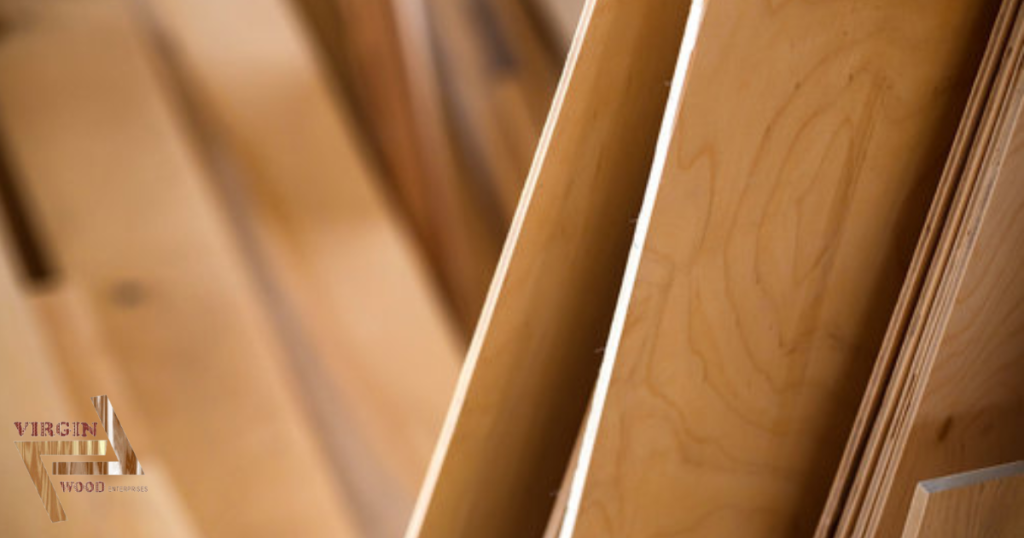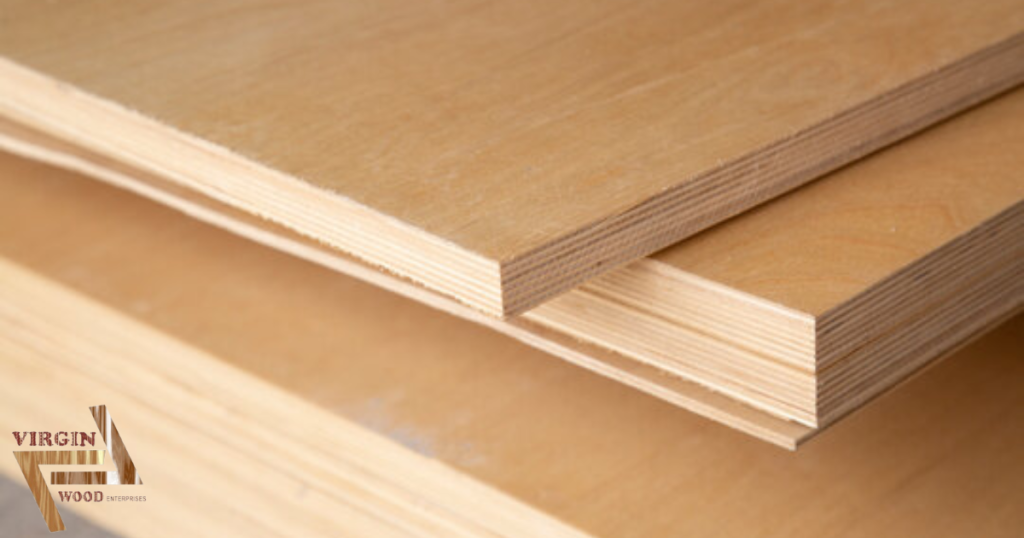Plywood: What is it?
The unsung hero of the construction industry is plywood. Layers of thin wood veneers with alternating grain directions are adhered together to create this manufactured wood panel. What makes that significant? Because of this cross-graining, plywood is renowned for its strength, warp resistance, and versatility. There is a kind of plywood designed specifically for the task, whether you’re building a shed or furniture.
Knowing the Fundamentals of Ply
Let’s discuss “ply.” The number of veneer layers utilized in the panel is denoted by the term “ply.” The thickness and strength of the sheet increase with the number of layers.
Ply types include 3-, 5-, and multi-ply.
3. Ply: Perfect for furniture and paneling in interior spaces. It is flexible and lightweight.
5-Ply: Provides additional strength for applications both indoors and outdoors.
The big guns are multi-ply (7+ layers). utilized for structural and heavy-duty construction tasks.
17 Plywood Types Described
First, let’s examine the 17 types of plywood you’ll most likely come across and see how they function in both interior and exterior settings.
1. Plywood made of softwood
composed of coniferous trees, such as spruce or pine. It is frequently utilized for wall sheathing, subfloors, and roofing.
2. Plywood made of hardwood
made from woods such as birch, oak, or maple. This kind is popular for furniture and cabinetry because it is more durable.
3. Plywood for aircraft
designed to be incredibly strong using hardwoods like mahogany. It is extremely durable and ultra-thin, even suitable for use in airplanes.
4. External Plywood
It is treated with water-resistant glue and is made to withstand the weather. Ideal for outdoor constructions such as fences, benches, and sheds.
5. Plywood with Lumber Core
has a core composed of solid wood strips. It is strong and has good screw retention, making it ideal for large, heavy furniture and cabinets.
6. Plywood for Marine Use
High-quality, water-resistant, frequently found in restrooms, docks, and boats. It is extremely resistant to delamination and fungus.
7. Plywood Overlay
Manufacturers coat this plywood with resin to achieve a smooth, long-lasting finish, making it a popular choice for ornamental panels and concrete formwork.
8. Plywood for Structure
intended to transport weights. frequently utilized in wall, flooring, and framing constructions where strength is a must.
9. Adaptable Plywood
It can bend! literally. used for projects that call for curves, such as rounded furniture.
10. Plywood for construction
This all-purpose category is utilized for floors, walls, and roofs. typically consists of a number of structurally graded types.
11. Plywood with a veneer core
layers of veneer and hardwood that alternate. It provides stability and good screw-holding power.
12. Plywood with MDF Core
possesses a core made of medium-density fiberboard (MDF). Excellent for smooth surfaces and painting, but not the best in areas with moisture.
13. ApplePly
A high-end plywood brand composed of many thin, hardwood layers. used to create a sleek appearance in contemporary cabinetry and furniture.
14. External Plywood Sheathing
Usually used behind siding, it is the first line of defense for the outside of your house.
15. Plywood subfloor
made to support weight and offer a sturdy flooring foundation. This kind holds your hardwood floor or tiles in place.
16. The Sundeala Board
Often used as notice boards, these are made from recycled paper fibers. Although it’s in the family, it’s not plywood in the strictest sense.
17. Plywood of Cabinet Grade
It is perfect for custom millwork and cabinetry because of its extremely smooth and superior veneer faces.
How to Pick the Proper Plywood Type

Selecting plywood isn’t difficult, but if you’re unsure of what to look for, it’s pretty close.
Examine the Use Case
Consider this: Is it intended for outdoor or indoor use? For flooring or cabinets? Time and money can be saved by matching the type to your project.
Examine size, edges, and flatness.
Do you want a smooth finish? For applications that are visible, like shelves, choose something with flat surfaces and tight edges.
Learn About the Surface Quality of Your Plywood Grades—more on that later.
Recognizing Plywood Grades
Let’s figure out that alphabet soup.
Grades A, B, C, and D
A Grade: Sanded, smooth, with minimal to no repairs. Ideal for projects that are visible.
B Grade: May need some repairs, but still sanded.
C Grade: Discoloration and knots. Not on ostentatious surfaces.
D Grade: Knotty and rough. ideal for secluded locations.
Grades both inside and outside
Exterior Grade: Waterproof glue is used.
Interior Grade: Designed for arid conditions.
Typical Plywood Dimensions and Costs
Let’s examine the figures.
Normal Sizes
- Sheets of standard size are 4′ x 8′.
- The thickness is between 1/8″ and 1 1/4″.
The average cost of plywood is
- $20 per sheet for softwood.
- High-end varieties like Marine Plywood or ApplePly? You should budget between $60 and $150+.
Brand, thickness, and grade all affect price.
What Are the Applications of Plywood?
Everything! Really. You name it: boats, shelves, cabinets, flooring, walls, roofs, and furniture. In the wood industry, plywood’s versatility is unparalleled.
Final Thought
Despite its unassuming appearance, plywood is a powerful building material. There is a plywood type for every interior or exterior project, with over 17 different varieties, grades, and sizes to choose from. Understanding your types and grades can help you save time, money, and headaches during construction, whether you’re using ApplePly to create a sleek cabinet, Exterior Plywood to sheath a house, or Marine Plywood to build a boat. Plywood is your project’s secret ingredient—it literally holds everything together.
FAQs
Which exterior plywood grades are there?
Grades of exterior plywood are A-B, A-C, B-C, and CDX. Despite surface differences, each one is constructed with water-resistant glue for reliable outdoor use.
Which plywood grades are there?
The grades for plywood are A, B, C, or D:
A = flawless and fluid
B = Small fixes
C = Knots that are visible
D = rough and inferior
For front and back veneer quality, grades are frequently combined, such as A-C or B-B.
What distinguishes interior grade plywood from exterior grade plywood?
Manufacturers design exterior plywood for outdoor use and treat it to resist water.
Manufacturers produce interior plywood specifically for dry, indoor environments since it can’t handle moisture.
Which kinds of interior plywood are there?
Typical varieties of interior plywood include:
Hardwood Plywood is both decorative and sturdy.
Lightweight and reasonably priced softwood plywood
MDF Core: paint-friendly and smooth
Veneer Core: robust and lightweight
ApplePly & Cabinet-grade: high-end furniture finishes

